
Rolex’s GMT is among the best-known of all aviation watches. The original model was introduced in 1954, and was famously issued to Pan-Am flight crews for travelleing through different time zones. The GMT II 16710 model began production in 1989, uses Rolex’s 3185 caliber, which has an independently-settable hour hand. Near the end of the production run, some 16710s were also fitted with the newer 3186 movement.
As with all GMTs, there is an extra hand that displays time in a 24-hour format in addition to the standard 12-hour hand, and the “GMT II” models allow the 12-hour hand to be set independently. The benefit of this complication is that the local time display can be easily changed by one-hour jumps, without having to hack the movement by fully pulling out the crown, and without affecting the home time displayed on the 24-hour hand. (“Hacking” means that when the watch is in full time set mode, the movement stops running by extending a small lever that blocks the motion of the balance wheel.)
The downside of this movement is that it doesn’t have a standard quickset date adjustment. The local hour hand has to go through a full 24-hour cycle to change the date. I find this to be a slight annoyance, although it’s still much faster than a traditional non-quickset movement, as the hand jumps six hours for every turn of the crown (or 8 h/turn in the 3186), and the date can be adjusted either forward or backward. Some people have also complained about the small twinlock crown, but I never found it difficult to use.
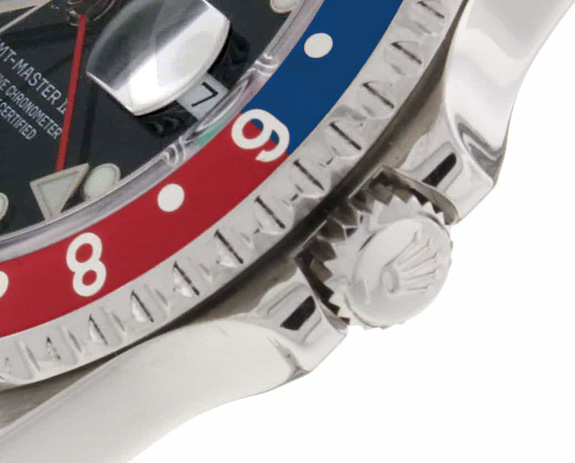
This is how you use the GMT Master II: When you leave home and start travelling, set the time from the red GMT hand pointer to match your home time on the 24-hour bi-rotational bezel, and its accurate, corresponding hour marker. And when you travel through different time zones, simply pull the crown to position two and roll the hour hand forward or backward as the time zones change. All this is done without having to stop the movement or reset the home time.
The 16710’s bezel has 120 increments — a feature it shares with the 16610 Submariner. However, the Submariner’s uni-directional bezel only rotates counter-clockwise, as a safety feature for diving use. The GMT Master, being a pilot’s watch, has a bi-directional bezel.
The current 116710 GMT Master II has different system on its ceramic bezel, in that has 24 clicks instead of the 16710’s 120 clicks. So not only does its hour hand change in one-hour increments, but also its bezel — which some find more convenient for a GMT watch. However, this limits its usefulness as a timing bezel for everyday tasks such as parking, and eliminates its ability to track the 30- and 45-minute time zone offsets that exist in some areas.
My watch’s serial number begins with a “K”, which means it was produced with lug holes on the side of the case and solid bracelet end links. Also, Super Luminova is applied within white gold hour markers, in place of the tritium found on earlier watches. Rolex only manufactured this combination for two or three years. The tritium and early Super Luminova models of 16710 had folded rather than solid end links. You can recognize these dials from “T<25” text below the six o’clock dial marker, while the new Luminova versions have “SWISS MADE” written instead. Later models remained unchanged except that the cases were produced without the drilled-through lug holes.

The 16710 is not a big watch. It has a case diameter of 40 mm, but it wears big enough, even on a bigger man. I also own a Rolex Explorer II 16570, which uses the same case, but wears smaller because of its fixed steel bezel.
My review of Rolex Explorer II 16570
The 16710 has a nice wrist presence and the distinctive blue/red (“Pepsi”) bezel insert option seems to be the most sought-after. Spare inserts can be found easily, and they’re relatively easy to swap as well. So the 16710 is practically a “three watches in one” package. Red/black (“Coke”) and all-black are the other options that Rolex produced for this watch.
Both the 16710 and the 16570 use the same 3185 (or later 3186) movement. It’s a well known solid performer and a “workhorse”.
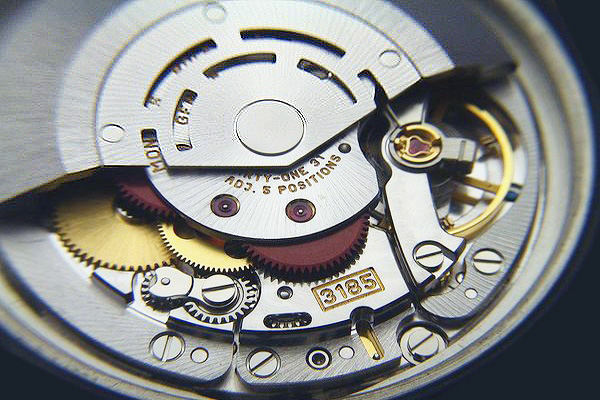
The old, hollow-link Oyster bracelets and their sheet metal clasps have been subject to criticism — often by those who haven’t actually worn them — as long as I can remember. The 16710 and 16570 use the shorter Oysterlock clasp without Submariner’s diving extension, which makes it slimmer and somewhat lighter.
Personally, I like the old Rolex Oyster bracelets, and while I admit they don’t suit modern sensibilities for what’s expected on an expensive watch, they’re strong, serve their purpose well, and are extremely comfortable to wear. They also have a certain silky, smooth feeling that none of the “homage” watches has managed to capture.
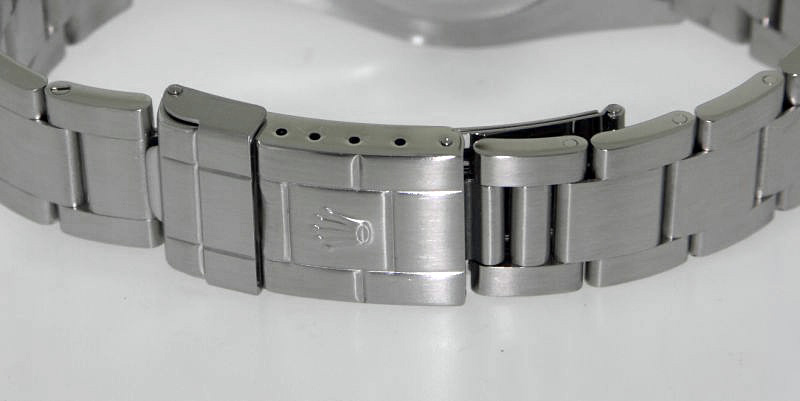
Do I like it? Yes I do. The 16710 is my all-time favorite Rolex, only next to the 16610 Submariner.
My review of Rolex Submariner 16610
I’m not a fan of the new bigger models because I felt they ruined the classic, perfect lines. But that’s just a personal preference. The new models are better watches in some ways that have some improved technical elements, though their ceramic bezel inserts cannot be changed by the owner, and are very costly to replace if they’re damaged.
These older Rolexes have elements that are sometimes criticized, and they’re not the fanciest watches in the world. But if we take an analogy from the car world, they have a bit of similarity to the Jaguar E-Type, the classic air cooled Porsche 911, and the Mercedes SL Pagoda. Newer cars run circles around them on a track, and they’re not even very fast by today’s standards. But still people form a long-term emotional bond to them that newer cars don’t seem to foster, and they’re highly sought-after. And unlike older car engines, the design and performance of Rolex’s 31XX-series movements is still the industry benchmark.
Do I think 16710 is worth the €6000 price tag that the market seems to demand for them at the moment — even for a beat-up T<25 tritium model? Absolutely not. I purchased my watch preowned for $3500 back in 2008. They produced hundreds of thousands of these. So it’s not like they’re becoming the next “Red Sea-Dweller” or “Paul Newman Daytona” anytime soon.
While a GMT watch was a genuinely useful and essential instrument for a pilot in the days before accurate electronic timekeeping was readily available and portable, I find many of these luxury “tool watch” features a bit pretentious in today’s world. I doubt many pilots actually use the GMT Master for any critical applications anymore. Though the watches are more accurate and reliable than ever, they’ve largely become nice expensive toys for big boys. But sense has little to do with watch collecting. And world would be a dull, miserable place if we couldn’t enjoy colorful nice things like the “Pepsi” GMT Master II.
Thanks for reading. And feel free to comment this post – or ask questions down below in the comment section.
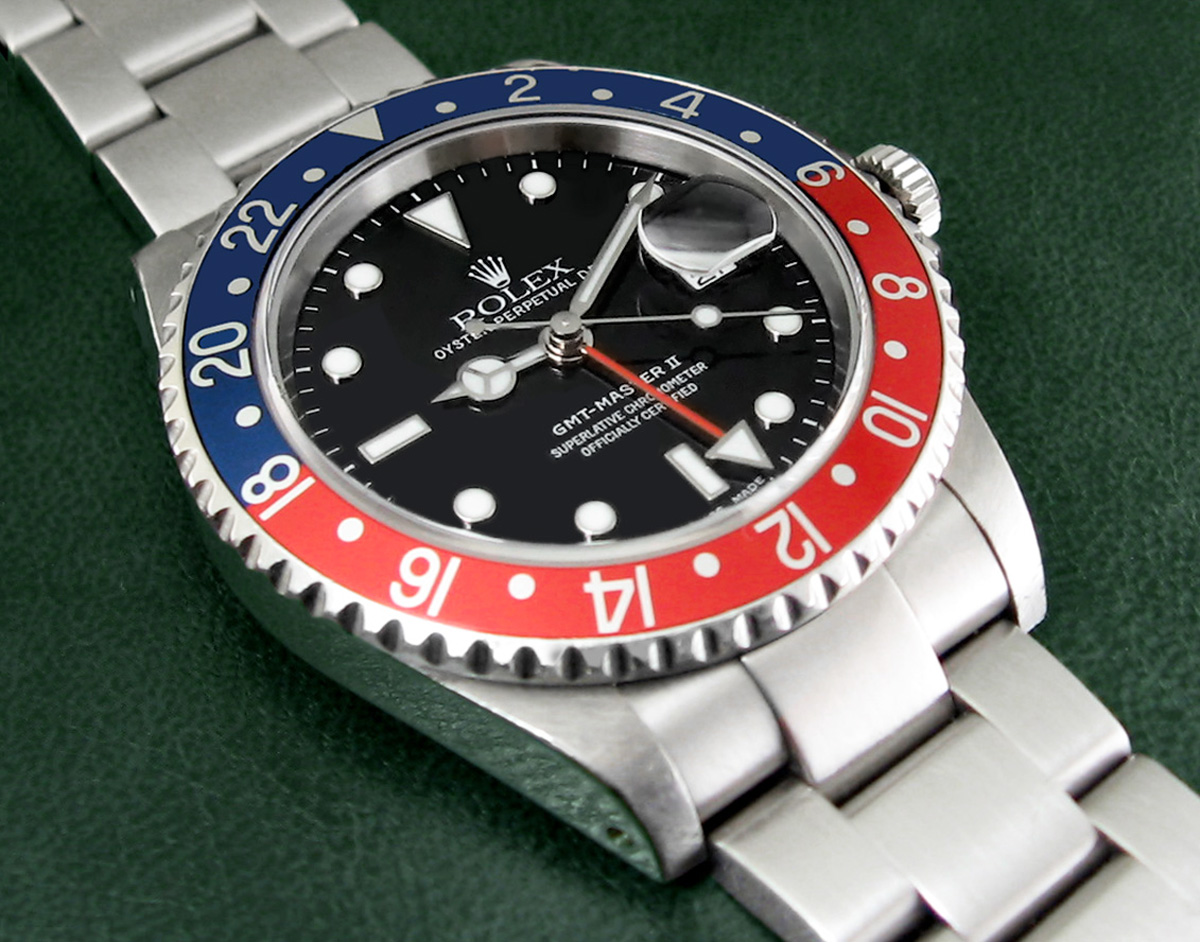
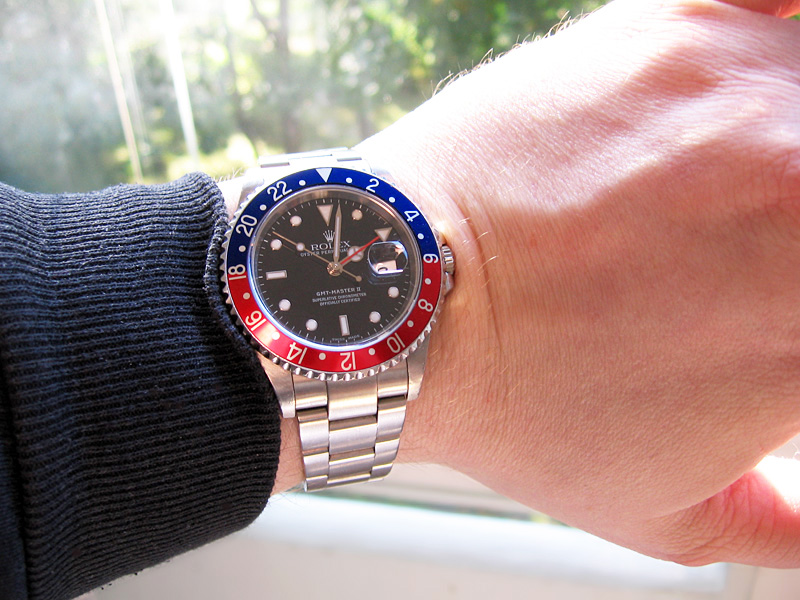
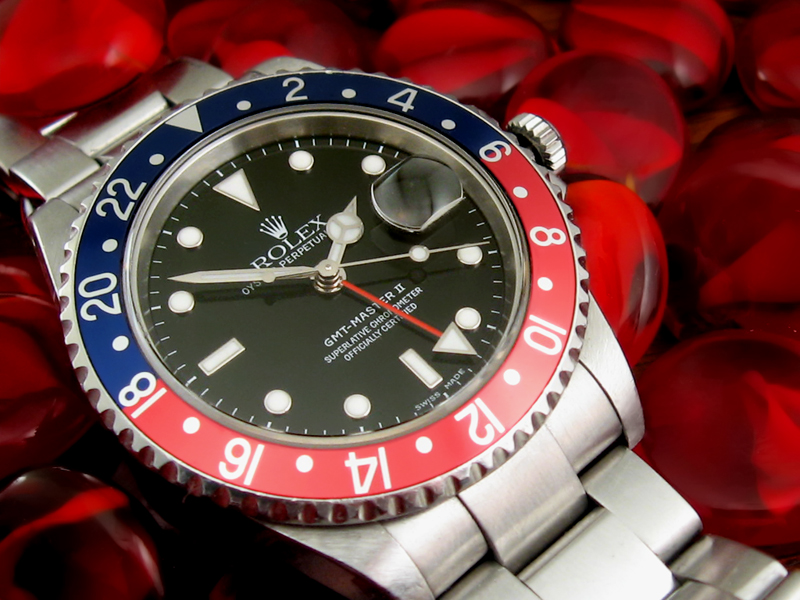
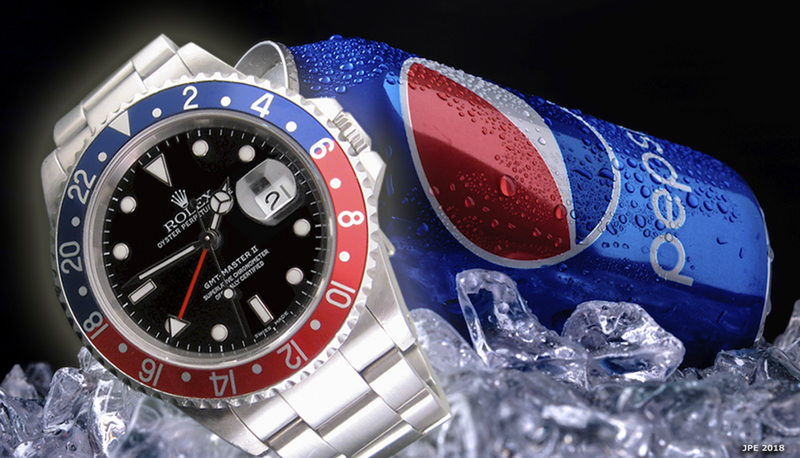

Good work
LikeLiked by 1 person
Enjoyed the write up, in my small collection I have a 16700 pepsi, it really is my daily watch, I bought it a couple of years ago and love it. My first was a 16713 bought about 14 years ago as a used model.
LikeLiked by 1 person
Thanks Ivor. Your 16700 Master I is actually quite rare and desirable. I suspect those were produced in much smaller numbers than 16710. Cheers.
LikeLike
One of the best GMT write ups I’ve read, great work.
LikeLiked by 1 person
Thanks much Andy. Appreciated.
LikeLike
What features push the 16610 over the 16710 for you? Seems like other than the bezel color/gradations the GMT ii should be superior given the utility of the GMT hour hand versus a few hundred extra feet of water resistance? Does the watch wear differently?
LikeLiked by 1 person
Jason: Yes, 16710 is definitely the superior watch. More practical of the two and that movement complication. I just like to wear my 16610 more, can’t really explain it. 16610 has the “perfect looks” and it goes perfectly with a suit.
LikeLike